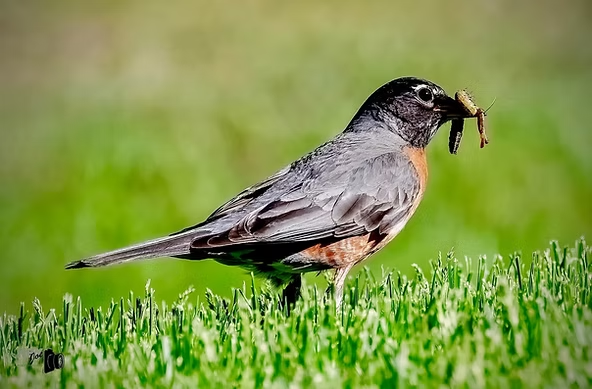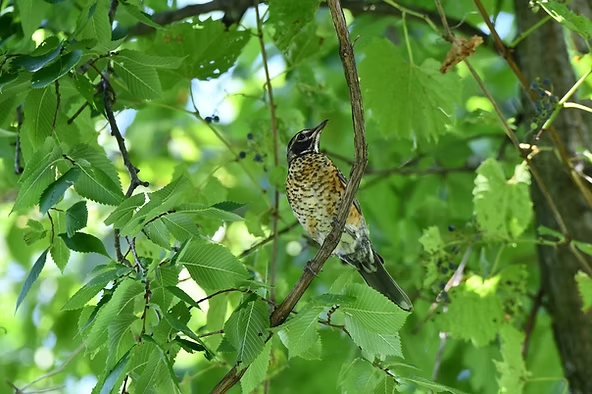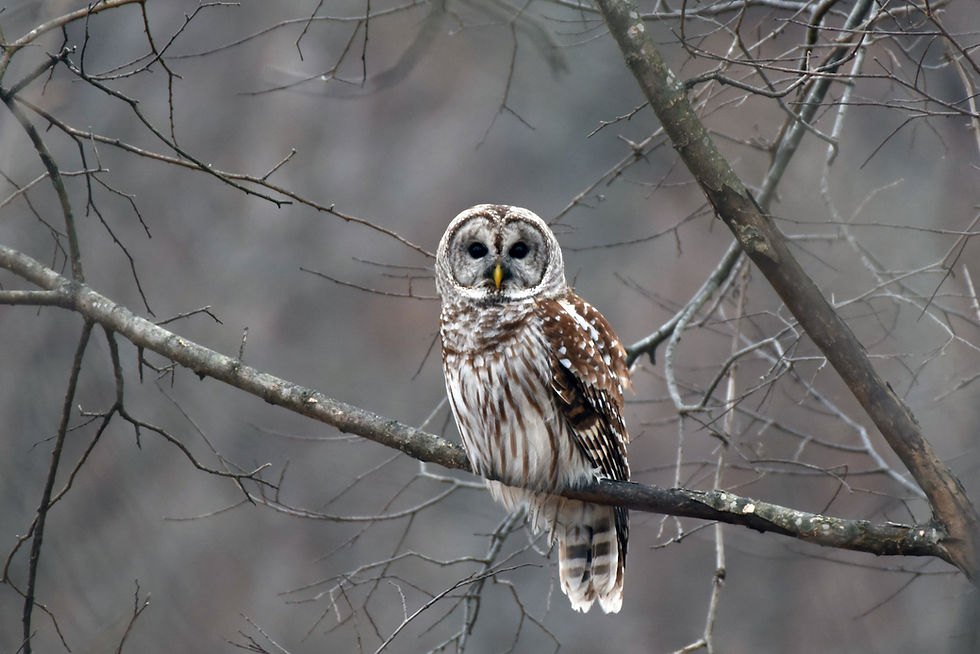Five fast facts about robins, our most familiar bird
- Willy's Wilderness
- Mar 20, 2023
- 5 min read
Updated: Jul 24
Robins are among our most familiar birds, and many of us learn to recognize them at a young age. We love them because we know them — what they look like, where to find them and even their favorite food.

One reason we know them so well is because their orange breast makes they easy to identify. And they're common too. They live across almost the entire United States, in urban, suburban and rural habitats from coast to coast. Who doesn't look forward to spotting a robin on their lawn as a welcome sign of spring?
Robins belong to the thrush family of birds, and they are the largest thrush. Key characteristics of thrushes include scaleless legs and narrow bills. Other thrushes we see in northern Illinois include eastern bluebirds, gray catbirds and northern mockingbirds.
Robins breed early in the spring, earlier than many other songbirds. They can have two or three broods of chicks each season, with each nest containing three to five eggs. Their eggs are a light blue color — robin's egg blue — that has inspired many color names, from crayons to paints.
They're around all year
When you think of spring, robins probably quickly come to mind. In reality, many robins stick around all year. Some robins do migrate south, but many stay on their breeding grounds year-round because they have access to a good food supply. We tend not to see them as often in winter, however, because they disappear from our lawns and local parks, where they are a common sight in spring and summer.
In the winter, robins tend to gather in flocks of hundreds or even thousands of birds, and they often spend their time in more forested areas. They also tend to be quieter in winter, so they draw less attention to themselves.
So what birds are a sign that spring is starting to creep in? Among the first to arrive back on their breeding territory each spring are male red-winged blackbirds. Turkey vultures are also among the earliest spring arrivals. And keep an ear out for male cardinals singing their song. They are among the first to start singing out for a mate in late winter and early spring.
They eat a lot more than just worms

The old saying "the early bird gets the worm" isn't specifically about robins, but no one would blame you if you thought it was. Robins are often up before the sun, and they are famous for their taste for earthworms, but they eat a lot more than just worms. Robins are omnivores, eating both plant and animal matter. In addition to worms, they eat insects as well as berries and other fruits. They aren't big nut and seed eaters, but they may occasionally be seen nibbling on them.
While they have varied diets, worms are their preferred food when they are available. In the summer, worms make up between 15% and 20% of a robin's diet, and they can eat as much as 14 feet of earthworms in a day! However, their diet can vary not just throughout the year but throughout the day. They tend to eat more worms in the morning and then choose more fruits and berries later in the day.
They all look alike

Among birds, it's common for males and females to have different appearances, like how male cardinals are a bright red color but females are a more dull color with some red highlights. Both male and female robins look the same, however. All adult robins are dark gray or grayish-brown with an orange breast.
The only difference in appearance between male and female robins is that females are typically lighter in color or have a more faded appearance than male counterparts. Female robins may also have more pale heads that look lighter than their back feathers.
Have you ever seen a robin that's breast isn't quite the bright orange color you are used to? That was very likely a juvenile. Young robins typically have spotting on their breasts that can look like polka dots. They may also have spots on their backs and wings, but it is typically most noticeable on their breasts.
They can be noisy but have a familiar song
Robins are a big part of the soundtrack of spring. If you think of birds chirping as spring sets in, it's probably the robin's song you hear in your head. Even though many robins stick around all year, we don't hear them much, or at all, in winter because they tend to stay quiet and hidden away. Come spring, though, their familiar sound rings out all around us.
Words to know
Breed: To mate and produce offspring.
Brood: A family of young animals.
Characteristic: A typical feature of a person, animal, plant or non-living object.
Omnivore: An animal or person who eats both plant and animal matter.
The song of a robin is said to sound like they are calling out "cheerily cheer up cheer up, cheerily cheer up cheer up," and they will repeat the song after a brief pause. Only males sing, and they sing throughout the day. They are among the first to begin singing each morning.
In addition to their loud, familiar song, robins make other sounds to communicate. They will make a "cuck" or "tuck" sound to communicate with other robins and also have an alarm call that sounds like they are sharply yelling "yeep." Females will also clack their bills at potential nest intruders.
They are named for a European bird
American robins got their common name because they reminded early European settlers of the robins from back home. While there are some similarities between the two birds, they aren't so similar that you can't tell them apart. The most striking similarity, and probably the reason American robins were given the name robin, is the orange to orangish-red breast. However, the breasts of European robins are only the familiar orange color at the top, in comparison to our American robins that have fully orange breasts. A European robin's lower breast is a cream or buff color, and their backs and wings are brown in color. European robins are also smaller than American robins.
European robins, which are commonly called robin redbreasts, live across most of Europe as well as parts of North Africa and Central Asia. Like our robins, they mostly eat worms and insects, along with some fruits and seeds. They live in varied habitats, including woodlands and fields as well as more populated spaces like parks.


